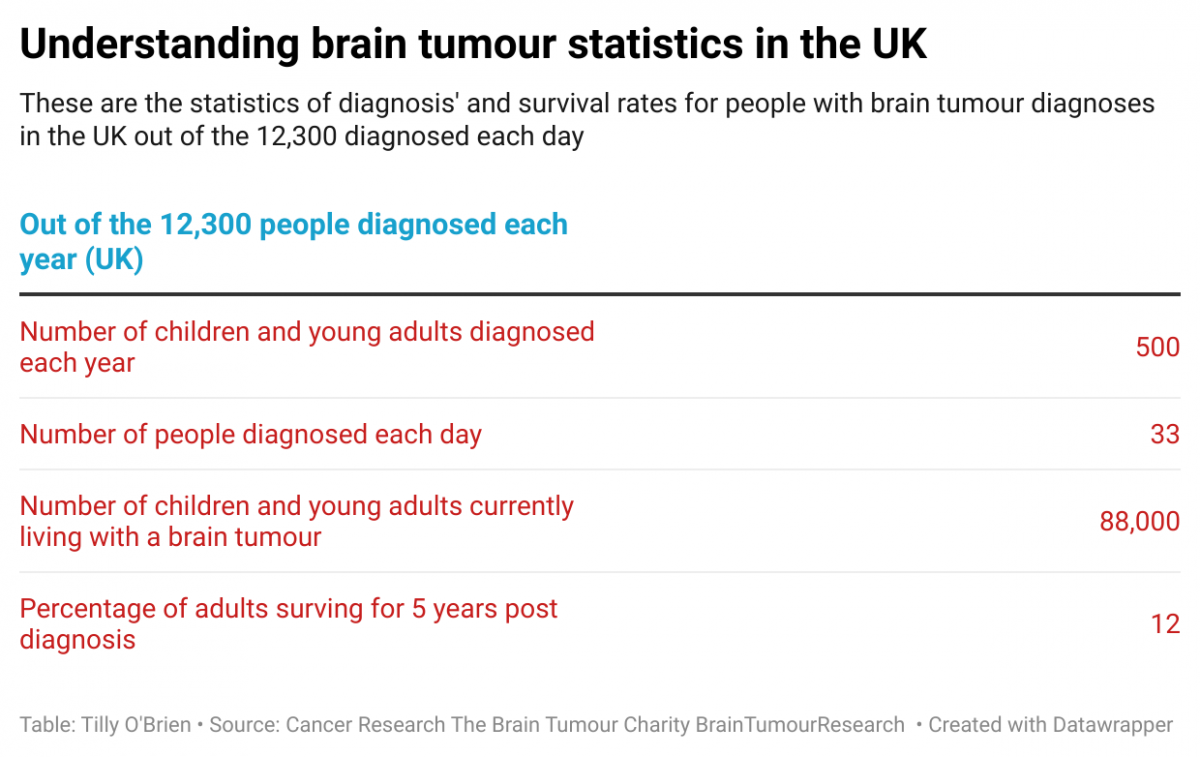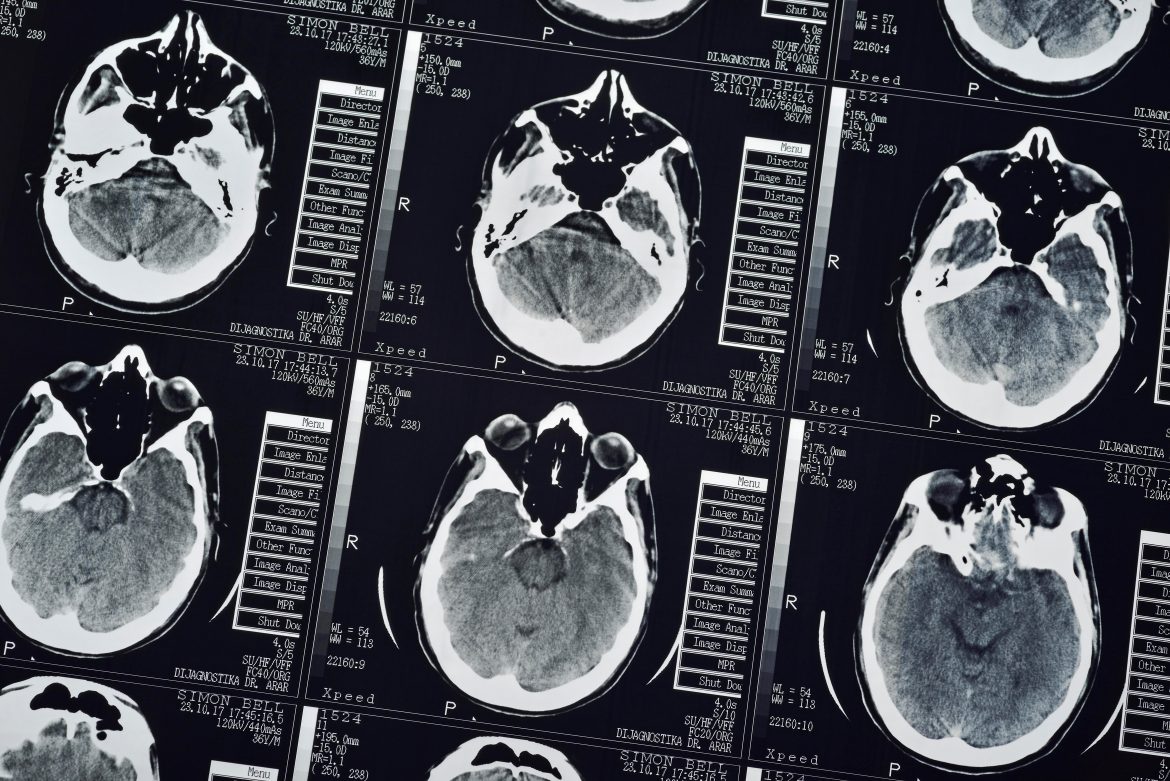Brain tumours are the biggest cancer killer of children and adults under 40 and Over 5,300 people lose their lives to a brain tumour each year. They reduce life expectancy by, on average, 27 years, which is the highest of any cancer.
This month (March) is Brain Tumour Awareness Month, which aims to raise awareness about brain tumours to help reduce diagnosis times and save lives. Brain tumour symptoms can vary, and research into brain tumours is underfunded – only 2% of cancer research funding goes into brain tumours. So, what are brain tumours, what types of brain tumours are there, what are the statistics of people living with them, what are the symptoms, and how are they treated?
What are brain tumours?
As per the NHS website: “A brain tumour is a growth of cells in the brain that multiplies in an abnormal, uncontrollable way”. They can either be malignant (cancerous) or benign (non-cancerous.
According to their behaviour, such as how fast they grow and how likely they are to grow back after treatment, they are graded from one to four.
Benign brain tumours are classed as low grade (grades one or two), meaning they grow slowly and are less likely to return after treatment.
Malignant brain tumours are classed as high grade (grades three or four). They can either start in the brain (known as primary tumours) or spread into the brain from elsewhere (known as secondary tumours) and are more likely to grow back after treatment.
Who can get a brain tumour, and what causes them?
Cancer Research informs that if you have a close relative (being a parent, sibling, or child) who has had a brain tumour, you are at higher risk of getting one.
A small proportion of brain tumours are related to known genetic conditions, including:
- tuberous sclerosis (TSC)
- Turner syndrome
- neurofibromatosis (NF) type 1 and type
- Li-Fraumeni syndrome
- Turcot syndrome
- Von Hippel-Lindau syndrome (VHL)
- Gorlin syndrome
People who have one of these conditions have an increased risk of getting a brain tumour.
However, while these are known risk factors for brain tumours, for most brain tumours, the causes are unknown. Moreover, although brain tumours may be hereditary, anyone can be diagnosed with a brain tumour.
Types of brain tumours
There are more than 120 different types of brain tumour, which are categorised based on the brain tissues they affect. Here are some of the more common types, as explained by the Brain Tumour Trust organisation:
Meningioma:
Meningiomas arise in the meninges and are relatively common. Most meningiomas are slow-growing tumours, although some can grow faster. Meningiomas are usually benign. However, in a small percentage of cases, they can become malignant and faster-growing.
Acoustic Neuroma:
Also referred to as vestibular schwannoma, these are slow-growing benign tumours which develop from Schwann cells. Acoustic neuromas account for around 8% of brain tumours and are generally found in adults.
Glioma:
A catch-all term for a range of brain tumours. These tumours arise from glial cells and can be benign or malignant. They usually fall into three types: astrocytomas, oligodendrogliomas and ependymomas.
Glioblastoma:
A Glioblastoma (GBM) is the most common malignant primary brain tumour. GBMs are a type of glioma. These tumours develop in the cerebral hemisphere and spread quickly into the surrounding brain.
The statistics
More than 12,000 people are diagnosed with a primary brain tumour each year, with one person diagnosed every two hours in England, including 500 children and young people being diagnosed with a primary brain tumour each day. This equates to 33 diagnoses a day. At least 88,000 children and adults are estimated to be living with a brain tumour in the UK currently.
Moreover, just 12% of adults survive for five years after diagnosis.

Symptoms
Brain tumour symptoms vary depending on their type and where in the brain they are located.
However, common symptoms include:
- headaches
- seizures (fits)
- persistent nausea, vomiting, and drowsiness
- mental or behavioural changes, such as memory problems or changes in personality
- progressive weakness or paralysis on one side of the body
- visual or speech problems
Symptoms are not always there immediately and may develop slowly over time.
The NHS advises you to “See a GP if you have these types of symptoms, particularly if you have a headache that feels different from the type of headache you usually get, or if headaches are getting worse”.
Treatments
As with the symptoms of brain tumours, treatments vary depending on the type of brain tumour you have and its impact. Treatments include:
- steroids
- medicines to help with symptoms
- surgery
- radiotherapy
- chemotherapy
Often, patients receive a combination of these treatments, for example, surgery does not always remove one’s whole tumour due to complications full removal may cause complications depending on its location in the brain and how deep it is, so radiotherapy or chemotherapy may be used as further treatment.
Help and resources
For further help, support, and advice if you or anyone you know are living with a brain tumour, there are several organisations you can contact, including:
Macmillan Support Line: 0808 808 00 00
Brain Tumour Support helpline: 01454 422 701. This line is available from Monday to Friday, 9 am – 5 pm. The organisation also offers a range of other support services, which can be found here.
Surrey Family and Child Support: 020 8974 5931. This service is part of Momentum and is based in Kingston.
Editor and reporter for the Kingston Courier





